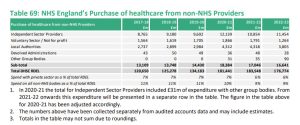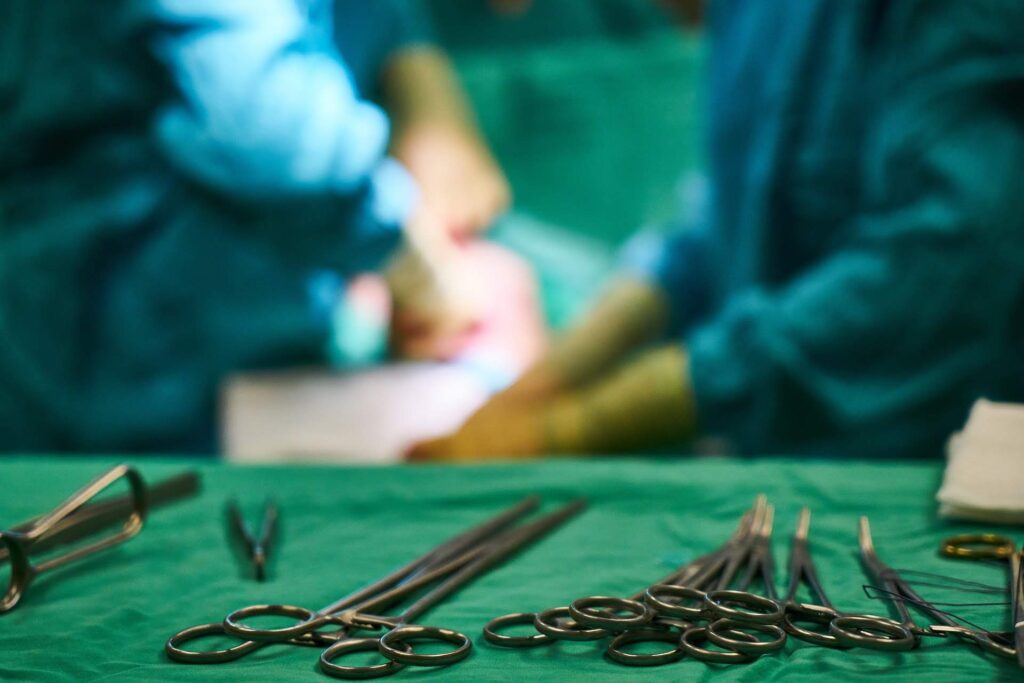The latest Department of Health and Social Care Annual Report and Accounts (2022-23) have updated the published figures on NHS spending on private sector and non-NHS providers.
They show that the private sector spend went UP in cash terms by £600m last year, while the DHSC’s total budget actually went DOWN by £6.7bn (from £183.548bn to £176.774bn).
This means that the percentage spent by commissioners on private providers went UP, from a recent low of 5.9% in 2021-22 to just under 6.5% in 2022/23. However this increase does not show up in the published figures because the DHSC report rounds the figures – so both come out as 6%.
With more detail the sequence since 2017/18 runs 7.3%, 7.3%, 7.2%, 6.6% (in 2020-21 when private spend increased by £2.45bn (25.2%) but total spending, inflated by Covid costs, increased by 35.2%, £47.3bn), 5.9%, 6.5%.
It’s also worth noting the significant impact of inflation which means that £11.5bn in 2022/23 is the equivalent of £10.3bn in 2019: but even so the cash increase of 18% spent on private providers since before the pandemic (2019/20) is a 5.9% increase in real terms.

This increase reflects developing NHS England policy of seeking to persuade local providers to increase the use of private hospitals and clinics to deliver NHS care in the absence of adequate NHS capacity.
But the latest figures cover a period before Rishi Sunak’s Elective Recovery Taskforce published its report urging even more use of private providers.
Much of the increase appears to be in ophthalmology services, with ICBs and the Royal College of Ophthalmologists complaining that private opticians on high streets have been increasingly referring patients directly to private clinics offering cataract surgery, with the NHS having no say, and no choice but to pick up the bill. The private sector of course is delighted.
The new figures suggest an increase in NHS dependence on private sector provision of elective cataract operations and joint replacements – which flows from the lack of capital to allow the NHS to expand to meet demand, as well as some ill-judged contracts that effectively put the private sector in control of cataract surgery in many areas.
National Joint Registry statistics show a fall, rather than an overall increase in numbers of hip replacements from NHS and private providers combined in 2023 compared with 2022, and numbers still below 2019 before the pandemic.
While Labour politicians have expressed concern at the amount of money being “poured into the NHS,” there seems more reason to be alarmed by the amount the NHS is then pouring into private sector providers. They are picking up more income from treating NHS patients – but the net result is no increase in numbers treated, leaving waiting lists unaffected.
Dear Reader,
If you like our content please support our campaigning journalism to protect health care for all.
Our goal is to inform people, hold our politicians to account and help to build change through evidence based ideas.
Everyone should have access to comprehensive healthcare, but our NHS needs support. You can help us to continue to counter bad policy, battle neglect of the NHS and correct dangerous mis-infomation.
Supporters of the NHS are crucial in sustaining our health service and with your help we will be able to engage more people in securing its future.
Please donate to help support our campaigning NHS research and journalism.


